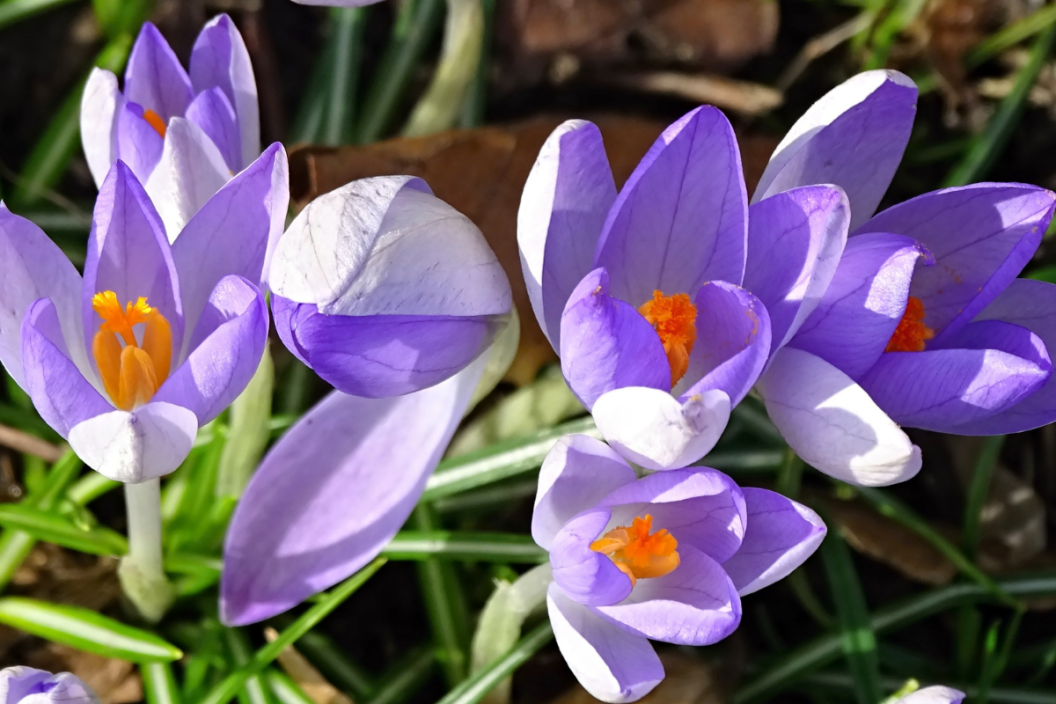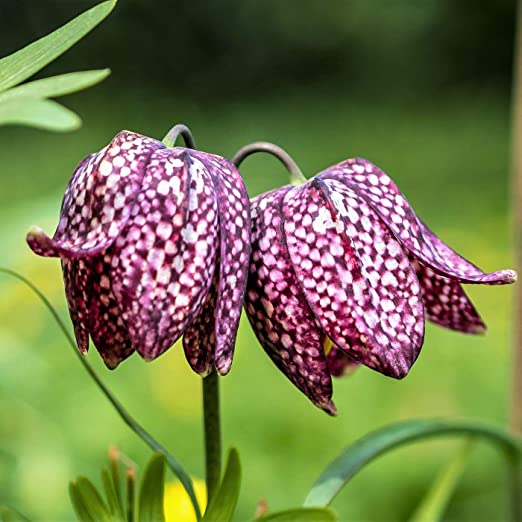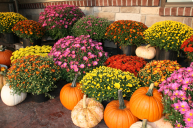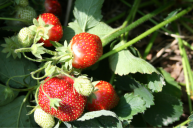Gardening is, in many ways, all about patience and investment. You plant your seeds or bulbs, water them carefully, protect them from too much sun, temperature extremes or water, and then wait for your garden to grow. And there's no better payoff for patience than a whole yard full of beautiful spring flowers. To get those spring blooms, though, you have to think about fall planting. For a stunning garden of flowers in spring, here are the flower bulbs to plant in fall.
How to Plant Bulbs in the Fall
You'll want to think of how the flowers will look in the spring. Not every type of bulb has the same bloom time, so if you're looking for groundcover, plant the same kind of bulbs close to each other.
Fall-planted bulbs will start to produce flowers when the temperatures warm up the next spring, though you'll find spring-flowering bulbs that bloom as early as late winter and as late as early summer. Bulb planting should be done when ground temperatures reach between 40 and 50 degrees, before the ground freezes.
If you're not planting in an existing garden, get rid of any rocks or weeds and make sure the soil is loose. Don't plant bulbs in areas where water stands; you want the soil to be well-drained, otherwise the bulbs will rot. It's good to add some kind of organic compost or fertilizer to add nutrients to the soil before planting. Plant bulbs pointy end up, at the depth noted on the package, but you can use a general guideline of 2 to 3 times as deep as the diameter of the flower bulb. Water the bulbs once, which helps the bulbs start to grow roots, but you don't need to keep watering them unless you live where it's particularly dry over the winter.
Naturalize Your Spring-Blooming Bulbs
The bulbs you plant in the fall will usually grow for several years. All you need to do to get your fall bulbs ready to bloom the next year is spread some kind of mulch or compost with fertilizer on top of the soil at the end of the season. You can cut flower heads off when the plant is done blooming, but don't cut the foliage off until it has turned yellow or brown, since the plants use the green stems and leaves to soak up nutrients from the sun.
Which Bulbs to Plant in the Fall
Allium
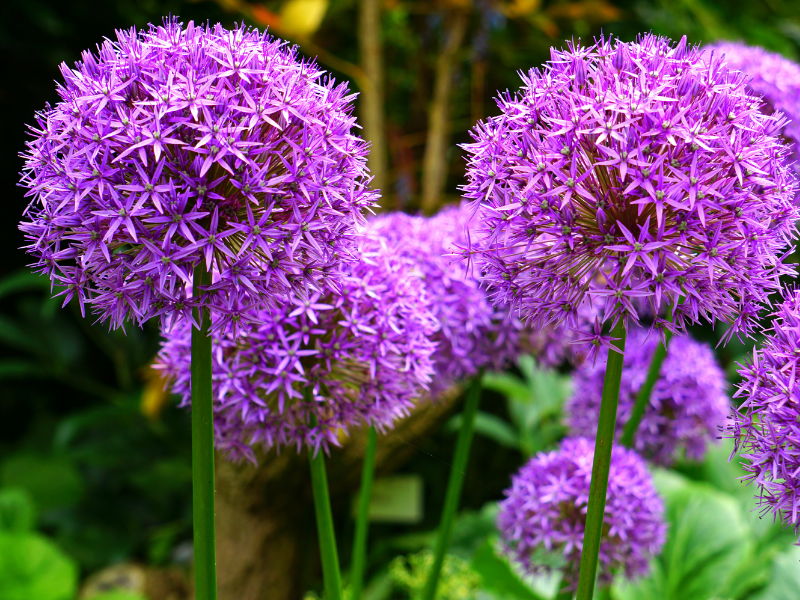
These delightful flowers look like the firework that explodes in a giant ball (appropriate since the "Purple Sensation" allium is also called the fireworks allium). Allium are one of the easiest plants to grow, plus the blooms hang around for several weeks. They're even deer resistant. These flowers like full sun and don't need much maintenance. They grow best in USDA hardiness zones 5-8, and generally bloom in May and June. These are one of the best bulbs for fall time.
Daffodils
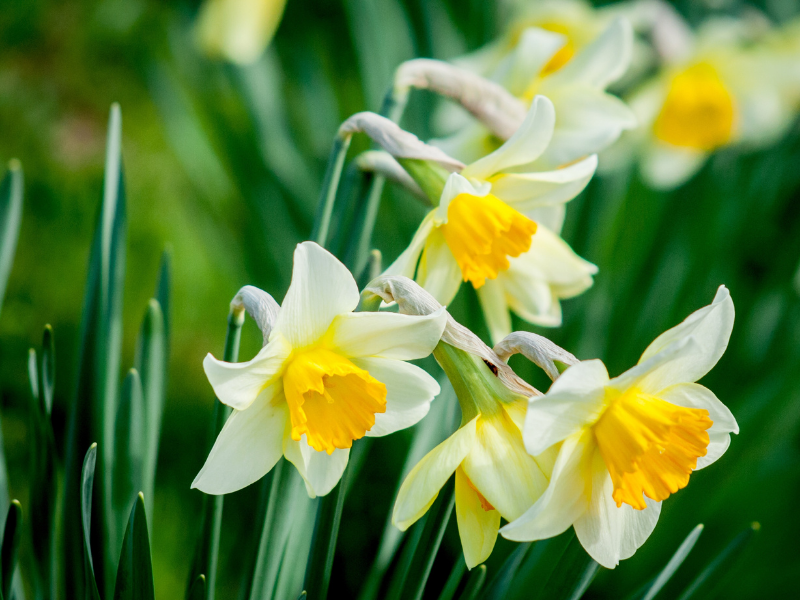
Daffodils, also called narcissus, are spring. You know that winter is on it's way out when you see the first bright yellow and white blooms start to show. These spring flowers will grow pretty much anywhere (hardiness zones 4-11), and you can find different varieties online or at your local nursery. Plant the daffodil bulbs in the fall where the plant will get full sun exposure and wait for them to bloom in early to mid-spring.
Grape Hyacinth
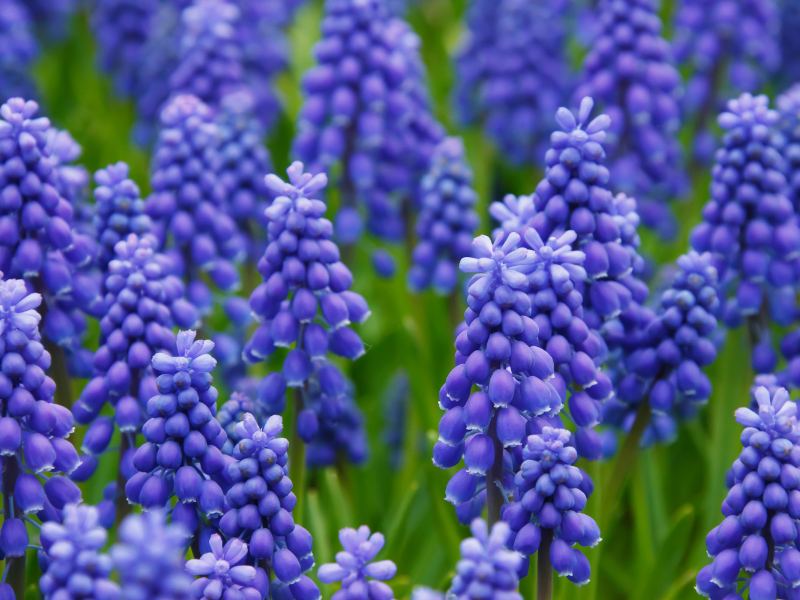
Also called muscari, the Grape Hyacinth really does look like a cluster of tiny purple grapes. They're not very tall, so don't plant the bulbs too deep. They grow best in well-draining soil in full sun to partial shade, and they're easy to grow in a lot of different areas (hardiness zones 3-11). You will need to make sure they get plenty of water after planting, but just until the ground freezes. These flowers have an earlier bloom time than other spring flowers, and you may see leaves poking out of the ground even earlier.
Crocus
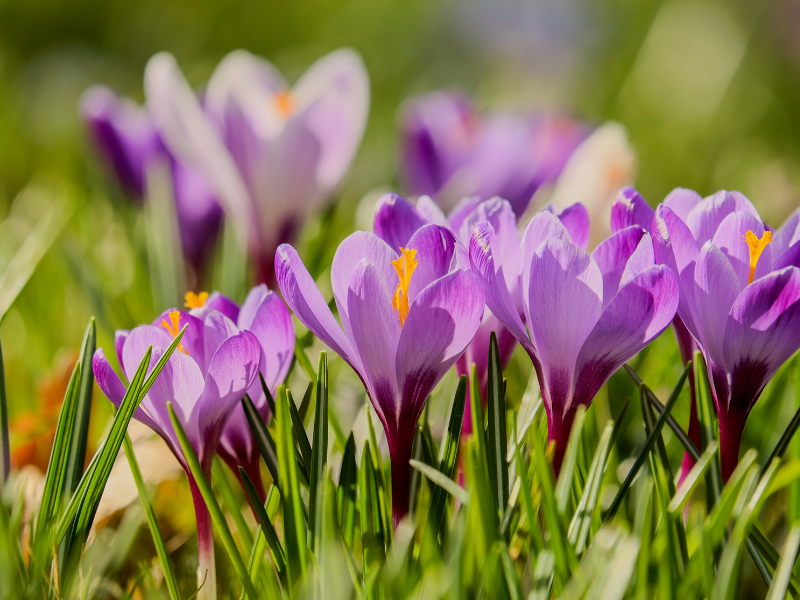
The crocus is another early-blooming flower; don't be surprised if you see them pop out of the ground while there's still snow. Plant them in full sun to partial shade (hardiness zones 3-8). This is a good plants for rock gardens, but know that crocus bulbs are loved by rodents, so you may find the flowers popping up in unexpected places after they've been dug up and moved around.
Snowdrop
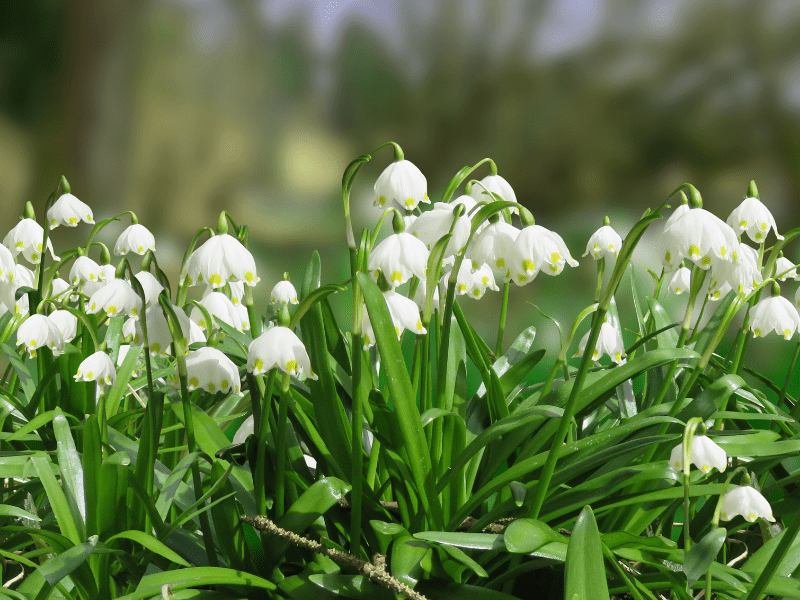
Snowdrops earn their name. These hardy flowers are early bloomers, showing up in late winter or very early spring. Plant the bulbs in full sun to partial shade and don't worry too much if there's a late snow after they start to appear. They're easy to maintain, and in fact, will pretty much expand on their own. They grow best in hardiness zones 3-8. There is also a similar-looking snowflake flower, which is known as a leucojum.
Tulip
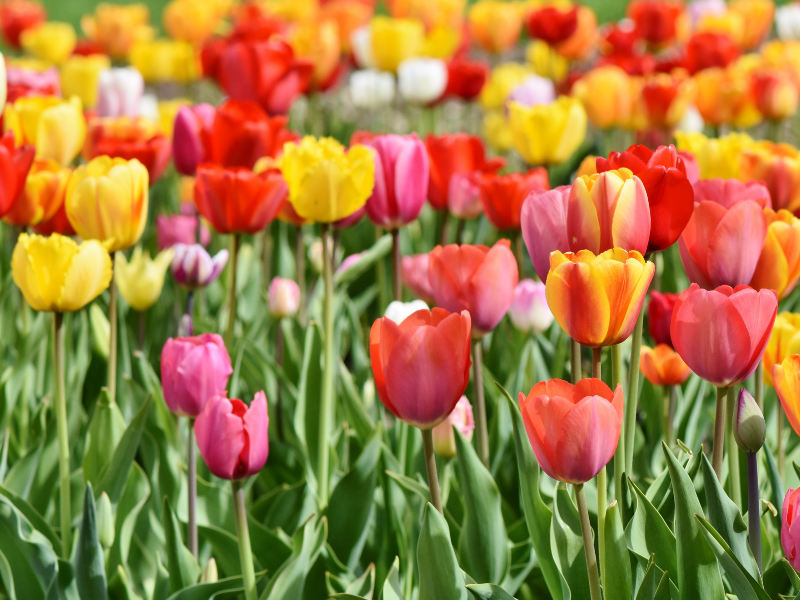
Tulips are one of the few fall-planted bulbs that don't grow back each spring. Plant your tulip bulbs in the fall each year in full sun or partial shade. Group these bright flowers together and mix the colors for pops of color throughout your garden, or grow them as part of your cut flower garden. They grow best in hardiness zones 3-8.
Dutch Iris
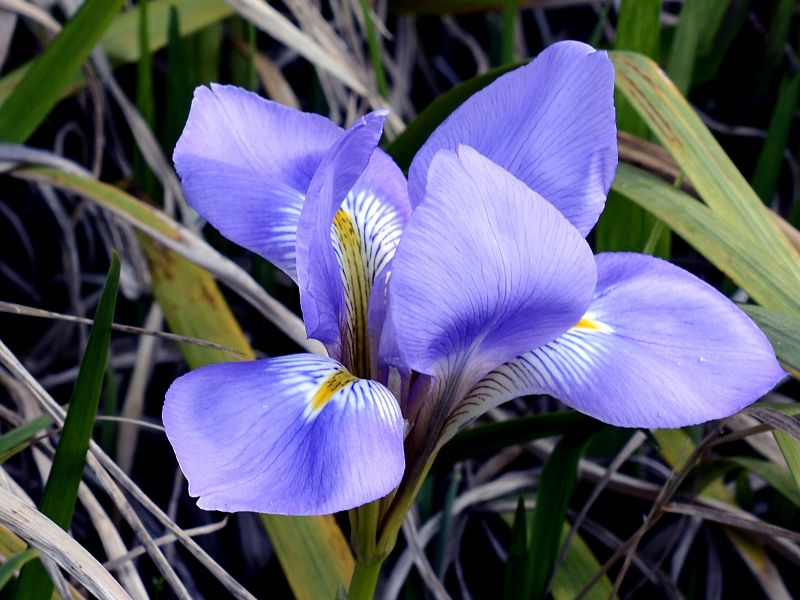
Dutch iris are easy to grow, but they only bloom for about two weeks so plant them together to get the full impact when they bloom in late spring to early summer. If you like to use cut flowers from your garden, this iris is a lovely one to include in your bouquets. The bulbs are small, so don't plant them too deep, and plant them in full sun to partial shade.They grow best in hardiness zones 5-9.
Anemone
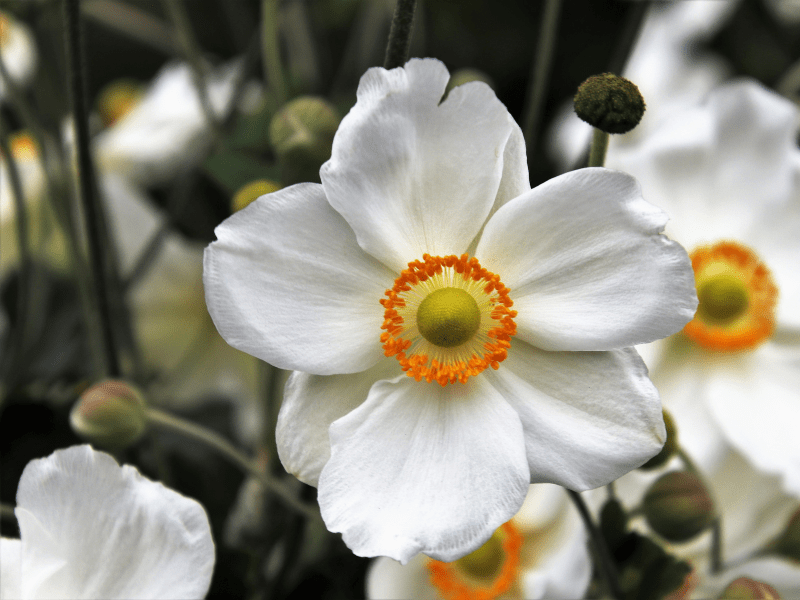
In the ocean, anemone fronds move with the water. In your yard, these delicate white flowers move with the wind, which is why they are sometimes called windflowers. They grow low to the ground and make excellent groundcover. Different varieties bloom in summer or fall, so make sure you get spring blooming bulbs and plan them in a mostly sunny area. They grow best in hardiness zones 3-8.
Scilla
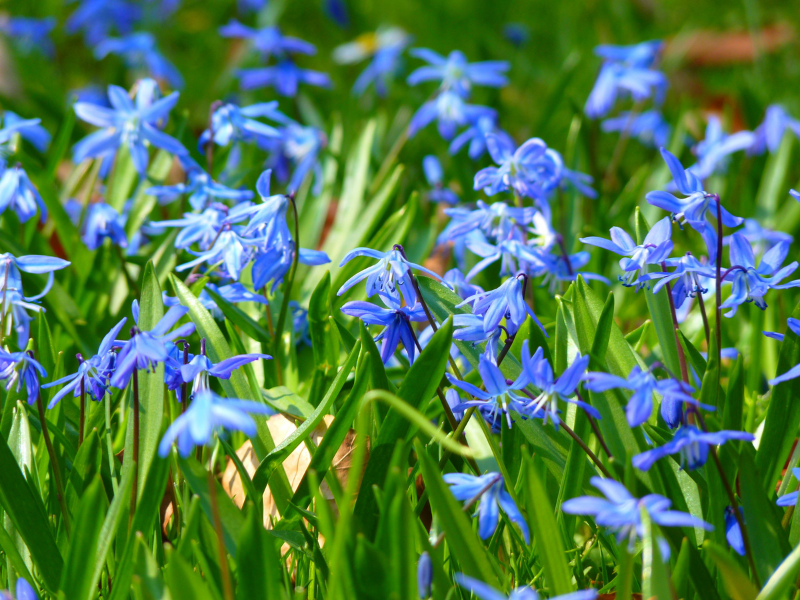
Also called squill, these porcelain blue or blue-white star-shaped flowers bloom in early spring. They work well as groundcover and they grow well in both full sun and in shade. They bloom early in the season, making for a nice pop of color in your garden. Plant these bulbs in the fall in hardiness zones 3-8.
Fritillaria
The fritillaria is part of the lily family, though they don't look like regular lilies. The purple checkered fritillaria are especially pretty. Plant the bulbs according to directions in full sun or partial shade, and make sure they get regular water. They will bloom in late spring or early summer, and grow best in hardiness zones 5-8.
Editor's Note: Products featured on Wide Open Eats are independently selected by our editors. However, when you buy something through our links, we may earn a commission.
This post was originally published on October 28, 2020.
